Product
Icing Detection System
Minimum performance of ICEFLO®

Magnetostrictive oscillation
-magnetic and mechanical
energy coupling
Ice accretion on the airplane may result in a degradation of the airplane’s handling characteristics, and a loss in airplane performance and flight safety margins. Inflight icing can be attributed to a combination of factors such as atmospheric conditions (e.g., temperature, humidity, liquid water, and cloud structure), airplane airspeed, and configuration. The frequency of encountering icing conditions is at a maximum between +10 °C and -10 °C static air temperature, then decreases rapidly with decreasing temperature below -20 °C. The chance of encountering icing conditions below static temperatures of -40 °C is rare. For general use, ICEFLO® should be designed to operate in all types of icing conditions throughout an ambient temperature range of -54 to +10 °C.
Functional Minimum
Requirements
The values given in paragraph 3.2 are for guidance only and may be modified to satisfy airplane manufacturer specifications and/or to comply with regulatory requirements. Refer to Chapter 6 for installed system considerations.
ICEFLO® that Detect
Ice Accretion
Conditions to Detect/Measure: ICEFLO® shall detect ice accretion that can occur in flight (frost, glaze, rime, runback) on defined airplane surfaces and shall annunciate the status to another airplane system and/or directly to the cockpit crew. ICEFLO® should be capable of detecting the presence of ice accretion under all atmospheric conditions.
ICEFLO® that Measure
Ice Thickness
ICEFLO® may provide information on ice thickness. ICEFLO® with an ice thickness measuring capability shall measure thickness with a minimum accuracy of ±0.5 mm or ±20% of the actual value, whichever is greater. ICEFLO® shall be capable of measuring thickness increments of 1 mm or smaller. ICEFLO® manufacturer shall specify the maximum thickness for which this accuracy applies.
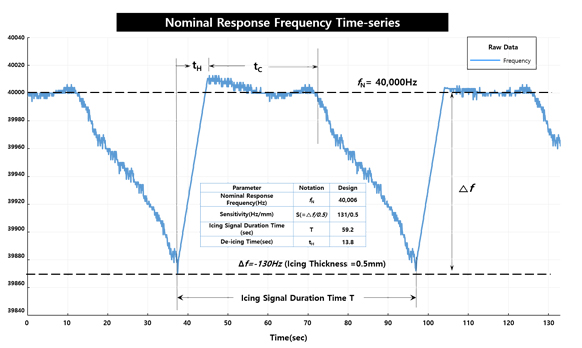
ICEFLO® that Measure Ice Accretion Rate
ICEFLO® may provide information on ice accretion rate. ICEFLO® with an ice accretion rate capability shall be capable of measuring ice accretion rates ≥0.5 mm/minute and shall measure with a minimum accuracy of ±30% or ±0.2 mm/minute, whichever is greater. ICEFLO® shall update the measurement at a maximum interval of 1 minute.
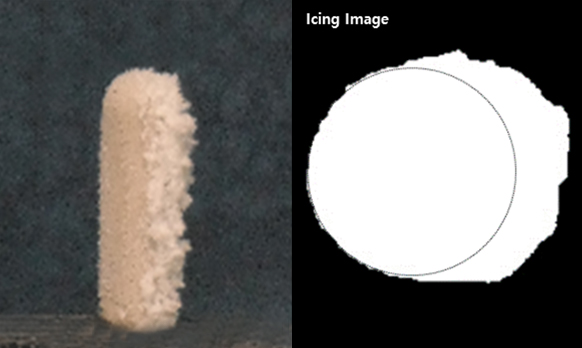
ICEFLO® that Measure Liquid Water Content
ICEFLO® may provide information on supercooled liquid water content (LWC). ICEFLO® capable of detecting LWC shall measure LWC with an accuracy of ±0.1 g/m3 or ±30% whichever is greater. ICEFLO® manufacturer shall specify the range of liquid water content for which this accuracy applies. The environmental test conditions and performance criteria described in this section provide a laboratory means of determining the overall performance characteristics of the equipment under conditions representative of those which may be encountered in actual operation.
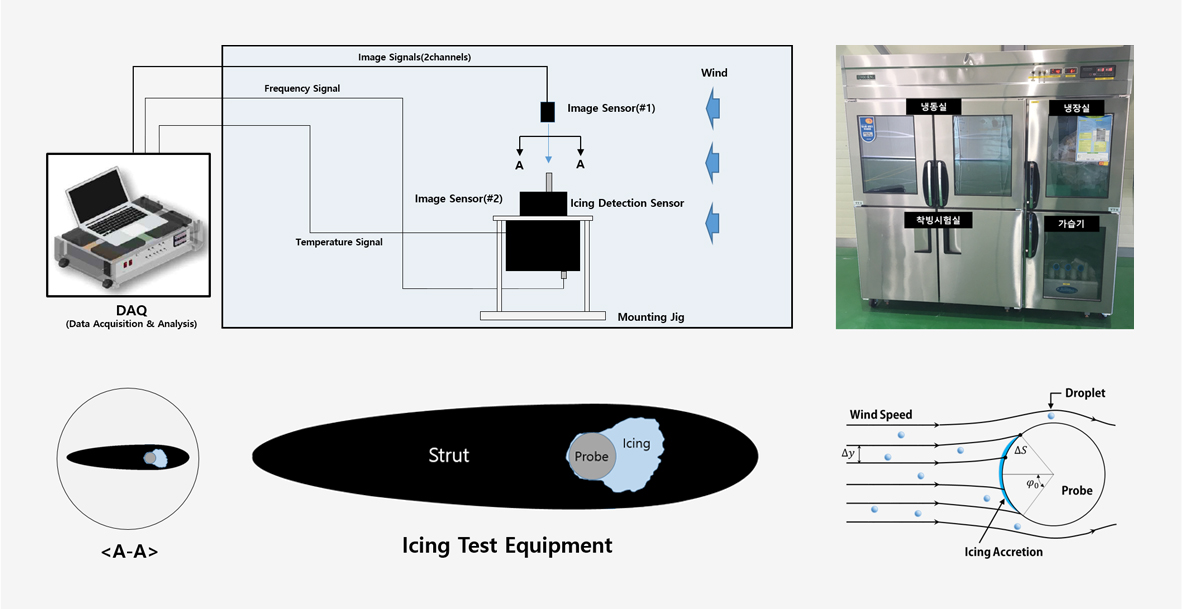
ICEFLO® Structure
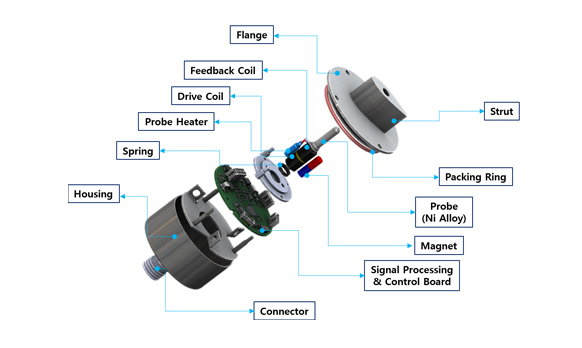
Integrated system – sensing part and signal processing part
The in-flight icing detection sensor ICEFLO® is designed to integrate the sensing part using an ultrasonically axially vibrating probe to detect the presence of icing conditions and signal processing part to measure ice accretion thickness and data processing. The sensing part is composed of a sensing probe, heating element, permanent magnet, and tow solenoids in order that electrical energy is transferred to magnetic energy and mechanical energy. A magnetostrictive oscillator (MSO) circuit is created with the above components and the addition of a pickup coil and an electronic comparator. The ultrasonic axial movement of the tube resulting from the activation of the drive
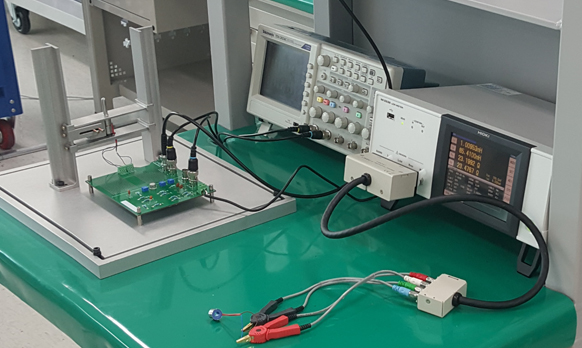
Test equipment for data acquisition and analysis
Functional test of ICEFLO® sensor
LWC measurement n diverse icing conditions
Real-time icing accretion data acquisition
Data analysis of statistics of test data
Field test and laboratory wind tunnel experiments
Test report adaptation
LWC measurement n diverse icing conditions
Real-time icing accretion data acquisition
Data analysis of statistics of test data
Field test and laboratory wind tunnel experiments
Test report adaptation






